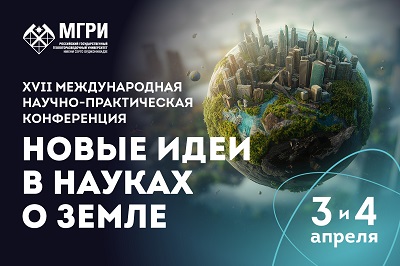Modeling of the stress-strain state in the earthquake epicenter area (Kumamoto Earthquake, Japan), 16.04.2016 M 7.3
https://doi.org/10.32454/0016-7762-2017-6-48-54
Abstract
About the Authors
V. N. MorozovRussian Federation
A. I. Manevich
Russian Federation
References
1. Забродин В.Ю., Рыбас О.В., Гильманова Г.З. Разломная тектоника материковой части Дальнего Востока России. Владивосток: Дальнаука, 2015. 126 с.
2. Колесников И.Ю., Морозов В.Н., Татаринов В.Н. (Св. о гос. рег. № 2011614290 «GEODYN 1.0») Программа для расчета напряженно-деформированного состояния в массиве горных пород на основе гетерогенного конечно-элементного моделирования.
3. Морозов В.Н., Колесников И.Ю., Белов С.В., Татаринов В.Н. Напряженно-деформированное состояние Нижнеканского массива - района возможного захоронения радиоактивных отходов // Геоэкология. 2008. № 3. С. 232-243.
4. Морозов В.Н., Колесников И.Ю., Татаринов В.Н. Моделирование уровней опасности напряженно-деформированного состояния в структурных блоках Нижнеканского гранитоидного массива (к выбору участков захоронения радиоактивных отходов) // Геоэкология. 2011. № 6. С. 524-542.
5. Морозов В.Н., Маневич А.И. Моделирование напряженно-деформированного состояния эпицентрального района землетрясения 26.01.2001 г., М = 6,9 (Индия) // Геофизические исследования. 2016. Том 17. № 4. С. 23-36, DOI: 10.21455/gr2016.4-2.
6. Aitaro K., Kouji N., Yohei H. The 2016 Kumamoto earthquake sequence // Proceedings of the Japan Academy, Ser. «B» (Physical and Biological Sciences). Vol. 92 (8). 2016. P. 358-371, DOI:10.2183/pjab.92.359.
7. Aitaro K., Jun’ichi F., Shigeki N., Kazushige O. Foreshock migration preceding the 2016 Mw 7.0 Kumamoto earthquake, Japan // Geophysical Research Letters. Vol. 43, Iss 17. P. 8945-8953, DOI:10.1002/2016GL070079
8. Kumamoto Earthquake Report 2 (April 17, 2016): Seismic activities and related information in central Kyushu since April 15, 2016 [Geological Survey of Japan]. https://www.gsj.jp/ hazards/earthquake/kumamoto2016/index.html (28.09.2017).
9. Morozov V.N., Kolesnikov I.Yu. and Tatarinov V.N. Modeling the Hazard Levels of Stress-Strain State in Structural Blocks in Nizhnekanskii Granitoid Massif for Selecting Nuclear Waste Disposal Sites // Water Resources. 2012. Vol. 39. Issue 7. P. 756-769.
10. Morozov V.N., Manevich A.I. Stress-strain state (SSS) of the epicentral area of the 1992 M = 6,8 Erzincan earthquake (Turkey) // Book of Abstracts of the International Conference “Data Intensive System Analysis for Geohazard Studies”, Sochi. 2016. P. 41, DOI:10.2205/2016BS08Sochi.
11. Okada Y. The 2016 Kumamoto earthquake (rapid report) // Earthquake. 2016. Vol. 61. P. 1-10.
12. Yagi Y., Okuwaki R., Okuwaki R., Kasahara A., Miyakawa A., Otsubo M. Rupture process of the 2016 Kumamoto earthquake in relation with the thermal structure around Aso volcano // Earth, Planets and Space. 2016. Vol. 68. Issue 1. P. 68-74. DOI:10.1186/s40623-016-0492-3.
Review
For citations:
Morozov V.N., Manevich A.I. Modeling of the stress-strain state in the earthquake epicenter area (Kumamoto Earthquake, Japan), 16.04.2016 M 7.3. Proceedings of higher educational establishments. Geology and Exploration. 2017;(6):48-54. (In Russ.) https://doi.org/10.32454/0016-7762-2017-6-48-54








































